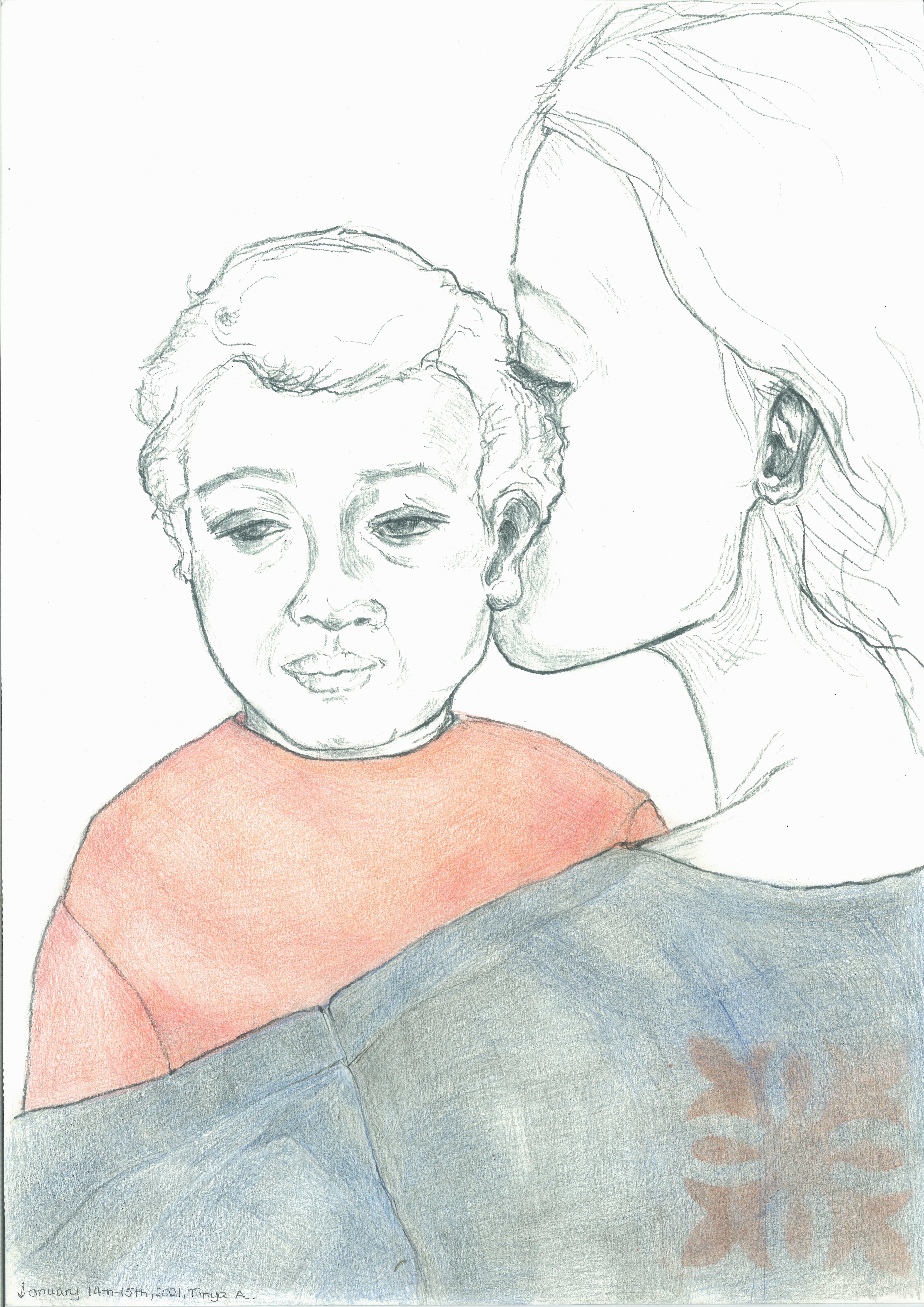Decisions…
“Imagine something like a little boat anchored in a bay and feeling this easing rising and falling of the evening waters. There’s a kind of hush that has fallen over the world…. sense of the day is now fulfilled…” (Extract from a guided meditation by Henry Shukman)

In these last few posts I have written a bit on how ignoring or dissociating our emotional realities can hinder decision making among other things because we miss useful information. I’ve also discussed couple and parental decision-making from the perspective of insiders and outsiders, a key concept in Baby Bomb, written by Kara Hoppe, MFT and Stan Tatkin, PhD. In the previous post I mentioned how according to the writers, parents need to be the insiders in all their glory as co-captains of their family ship and that everyone else is an outsider. Putting the couple first is like creating an invisible force field around the two, which gives security and strength and an ever-present sense of loving protection. Then from this safe and secure place, the couple can reach out and incorporate others (the outsiders) in whatever ways they choose. Hoppe and Tatkin emphasize the importance of insiders making sure that outsiders don’t hijack the decision-making process and suggest the couple use the concept of insiders and outsiders to strengthen their team and to clarify the role of their extended team.
Before I write a bit more about the book I’d like to refer to something relevant to decision making, explored from a different angle from Rick Hanson, PhD, in his article What’s left out? in last week’s newsletter Just One Thing. He tells us that when he looks back at any mistakes he has made he realizes that usually a part of him had taken over. He writes: “The parts of us that have a partial view are driven by one aim, clamp down on other parts…. The mega part – the big boss – is of course the inner executive, the decision-maker, and the driver – some call it the ego-centered in neural circuits in the prefrontal cortex, behind your forehead. This part is determined to a fault, running things top-down, ignoring bottom-up signals of growing fatigue, irritability, burnout, and issues with others. It draws on and gets wrapped up in the sequential, action-planning, language processing parts of you that are based in regions in the left side of your brain. (The statements here about sides of the brain are reversed for about half of all left-handed people.) Meanwhile, the boss part shames, disowns, and suppresses other parts of you, especially those that are softer, more vulnerable, and younger.” However, he concludes that when we open up to the whole of our experience and when we are more in touch with our feelings, we have more information and can make better decisions because seeing the bigger picture, can put things into perspective, and also, free up energy that was spent pushing down our real feelings.
 Now to return to the book mentioned above, it provides helpful techniques and exercises, and examples of how to negotiate decision making, nurture partnership, and create or return to secure attachment. The book also tackles gender roles in parenting, introduces the valuable idea that parents come first and presents tools to help parents flourish and grow as individuals, as a couple and as parents. Hoppe and Tatkin shift the old paradigm, where mothers have traditionally been the ones primarily responsible for raising a securely attached child to a new paradigm in which secure-functioning couples can do this together and more effectively. The book is based on the premise that partners support each other in growing, healing, achieving goals and realizing dreams, while acknowledging that parenting and partnering can bring up old traumas or attachment wounding. It is also informed by attachment theory and provides tools to build a secure-functioning relationship, which among other things is a relationship in which the partners are wholeheartedly committed to caring for themselves and each other. According to attachment theory, children need a strong and dependable bonding experience with their primary caregivers in order to feel safe in life, and be better able to explore, be creative, trust others, be soothed from distress, and develop self-esteem and confidence.
Now to return to the book mentioned above, it provides helpful techniques and exercises, and examples of how to negotiate decision making, nurture partnership, and create or return to secure attachment. The book also tackles gender roles in parenting, introduces the valuable idea that parents come first and presents tools to help parents flourish and grow as individuals, as a couple and as parents. Hoppe and Tatkin shift the old paradigm, where mothers have traditionally been the ones primarily responsible for raising a securely attached child to a new paradigm in which secure-functioning couples can do this together and more effectively. The book is based on the premise that partners support each other in growing, healing, achieving goals and realizing dreams, while acknowledging that parenting and partnering can bring up old traumas or attachment wounding. It is also informed by attachment theory and provides tools to build a secure-functioning relationship, which among other things is a relationship in which the partners are wholeheartedly committed to caring for themselves and each other. According to attachment theory, children need a strong and dependable bonding experience with their primary caregivers in order to feel safe in life, and be better able to explore, be creative, trust others, be soothed from distress, and develop self-esteem and confidence.
Three attachment types: secure, ambivalent insecure, and avoidant insecure, are discussed, which aren’t fixed or the same in every relational context or phase of our life. Most importantly, we can learn and grow in ways that make us more secure. In this book Hoppe thinks of and describes the three basic attachment types (disorganized attachment is not discussed here) as existing on a circular continuum and visualizes the continuum with vibrant colors. She suggests that this allows for an appreciation of the complexity and variations in our attachment style, which can help people identify where they are now and how to move around on the continuum in response to the ebbs and flows of their relationship and of life. They view this as an ongoing growth process. They quote John Bowlby, who postulated that “attachment is a lifelong process, and other researchers have since confirmed that the degree to which you feel secure plays out in your primary intimate partnership, parenting, and relationships with close friends and coworkers.”
They have also synthesized ten guiding principles for successful, secure-functioning partnering and parenting, which are not a one-time fix, but a life-long process. In brief some of these guiding principles are:
Partners team up to put their relationship first and to treat each other with reciprocity and equality, before all the other aspects of their lives. This first principle they claim is “like the oxygen masks you put on yourselves before you take care of your baby.” Partners take care of themselves and each other and monitor themselves and each other at the level of their nervous systems, and learn how to soothe or energize both themselves and each other. Partners learn to co-regulate and engage in practices that help them manage their nervous systems for relationship restoration as well as preventive care. They write: “We humans relate to each other through our nervous systems. You and your partner are, in essence, two nervous systems interacting.” Partners make solid agreements with each other that they respect because clarity creates security. As they highlight, as a couple and as parents “we don’t have the luxury of skating by on implicit or unconscious agreements. You want it clear, explicit, and in writing.” Partners communicate openly and directly and make decisions as a team and they consult with each other on all decisions, including those related to the baby / children. Partners value both their own and each other’s needs and they practice direct communication with each other about their respective needs, and also, treat the other’s needs as of equal importance to their own. Partners try to keep family and work lives in balance, and they make sure that having a baby does not derail family-work balance. Partners redefine romance to keep couple connection alive and when conflict or disagreements arise partners should fight for two winners and work on quickly healing any hurt. Partners parent with sensitivity, respect, and trust and decide on their common values in relation to their parenting.
Although there are many useful and interesting topics and tools presented in the book, I will end today’s post with the topic of cultural messages relevant to the guiding principles discussed above. They claim that cultural messages often force us to make an either-or choice, in other words, we think we either have to put ourself first or our partner, and this is a false dichotomy that stems from a patriarchal and individualistically oriented culture. They provide tips to identify ways how these messages are not conducive to partnership. First, they suggest we notice messages in articles, films, television programmes, and other media, in conversations with family, friends, colleagues, and in other settings. Then they encourage people to share these observations with their partner, and also, notice how this messaging appears in their own partnership, while trying to work out win-win solutions that benefit both, as well as, their children.
